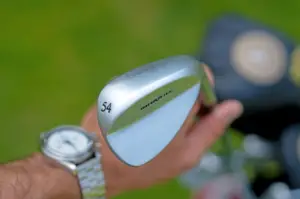Are you struggling to find the right shafts for your golf clubs? Choosing between stiff and regular shafts can have a significant impact on your distance and accuracy on the golf course. In this comprehensive guide, we’ll explore the differences between stiff and regular shafts, how to determine which flex is best for you, and provide valuable insights to help you make an informed decision. Let’s dive in!
Understanding Shaft Flex: Regular vs Stiff
When it comes to golf club shafts, the flex refers to the amount of bend or stiffness in the shaft. The two primary flex options are regular and stiff. A regular shaft is more flexible, while a stiff shaft is firmer and harder to bend.
The choice between regular and stiff shafts depends on various factors, including swing speed, distance, control, and personal preference. Let’s take a closer look at how each flex can affect your game.
Regular Shaft: The Perfect Balance
Regular shafts are ideal for golfers with a slower swing speed or those who prioritize control over distance. These shafts provide more flex, allowing the club to load and release more easily during the swing. They can help golfers generate more power and achieve a higher trajectory.
If you tend to hit the ball shorter distances and struggle with consistency, a regular shaft may be the best fit for you. It can help you optimize your swing and improve accuracy by allowing for more forgiveness and better shot dispersion.
Stiff Shaft: Unleash Your Power
On the other hand, stiff shafts are designed for golfers with a faster swing speed or those seeking maximum distance. These shafts have less flex, providing more stability and control for players with a stronger, more aggressive swing.
If you’re a long hitter and want to maximize your distance off the tee, a stiff shaft can help you achieve that extra yardage. It allows for a more efficient transfer of energy, resulting in a lower ball flight and reduced spin. However, it’s essential to note that using a shaft that is too stiff for your swing can lead to lower trajectory and decreased accuracy.
Finding the Right Flex for Your Swing
Determining the optimal shaft flex for your swing is crucial for maximizing your performance on the golf course. To make an informed decision, consider the following factors:
- Swing Speed: Swing speed is a crucial indicator of which flex is suitable for you. Generally, a swing speed between 84-96 mph suggests a regular shaft, while a swing speed of 97-104 mph leans towards a stiff shaft. However, individual variations and swing characteristics play a significant role, so it’s best to rely on data-driven insights from launch monitors or professional fittings to make an accurate assessment.
- Distance and Accuracy: Analyze your ball flight, distance, and shot dispersion with both regular and stiff shafts. Pay attention to how each flex affects your game and whether you’re achieving the desired trajectory, control, and consistency.
- Custom Fitting: For the most precise shaft selection, consider getting a custom fitting session with a professional club fitter. They will analyze your swing dynamics, collect data using launch monitors, and recommend the best shaft flex, weight, and other specifications tailored to your unique swing profile.
Remember, selecting the right shaft flex is a highly individualized process. It’s essential to base your decision on accurate data and expert guidance rather than relying solely on general guidelines.
Additional Factors to Consider: Weight and Kick Point
While flex is a primary consideration, other factors such as shaft weight and kick point can further enhance your performance. Let’s explore their significance in finding the perfect shaft for your golf clubs.
Weight: Striking a Balance
Shaft weight plays a crucial role in determining the feel and performance of your clubs. Generally, lighter shafts allow for increased swing speed, while heavier shafts provide more stability and control. Finding the right balance of weight can help optimize your swing tempo, timing, and overall clubhead performance.
Graphite shafts, known for their lighter weight, are commonly used in woods to maximize distance and enhance feel. Steel shafts, on the other hand, are often preferred in irons for their stability and control.
During a fitting session or when selecting new clubs, consider experimenting with different shaft weights to find the optimal combination for your swing characteristics and playing style.
Kick Point: Controlling Ball Flight
The kick point, also known as the bend point, refers to the part of the shaft that flexes the most during the swing. The kick point significantly influences the launch angle and trajectory of your shots.
A high kick point creates a lower ball flight, which can benefit players who struggle with excessive spin and a high trajectory. Conversely, a low kick point promotes a higher launch, helping golfers achieve more carry distance.
Stiffer shafts typically feature higher kick points to assist in controlling ball flight. However, it’s essential to remember that kick point preferences can vary based on individual swing characteristics and desired shot shape.
When selecting a shaft, consider your desired ball flight, launch angle, and spin characteristics to find the best kick point for your game.
Graphite vs Steel Shafts: Which is Right for You?
While graphite shafts are commonly associated with woods, the choice between graphite and steel extends to irons as well. Here’s a breakdown of the key considerations when deciding between graphite and steel shafts:
Graphite Shafts: Lighter and More Forgiving
Graphite shafts are generally lighter and more forgiving than steel shafts. They offer increased swing speed potential, making them ideal for players with slower swing speeds or those seeking effortless distance.
The lightweight nature of graphite shafts can help golfers generate more clubhead speed, resulting in improved distance and higher launch angles. They also tend to dampen vibrations, providing a smoother feel at impact.
Graphite shafts are particularly advantageous for players who prioritize distance, trajectory, and ease of use. However, it’s important to choose the appropriate flex and weight to optimize performance.
Steel Shafts: Enhanced Control and Consistency
Steel shafts are typically heavier and offer greater control and stability. They provide a solid, responsive feel preferred by many accomplished golfers. Steel shafts can help promote accuracy, especially for players with faster swing speeds or those who prefer a more controlled ball flight.
The additional weight of steel shafts can enhance the golfer’s ability to control the clubhead throughout the swing, resulting in improved shot dispersion and consistency.
When deciding between graphite and steel shafts, consider your swing characteristics, playing style, and personal preferences. Custom fittings can provide valuable insights and recommendations based on your unique needs.
Determining Your Ideal Shaft Flex: Practical Tips
Now that you understand the differences between regular and stiff shafts, and have considered other essential factors, it’s time to determine your ideal shaft flex. Here are some practical tips to help you make an informed decision:
- Data-Driven Approach: Utilize launch monitors and swing analysis technology to gather accurate data on your swing speed, ball flight, and shot dispersion. This objective information will provide a solid foundation for selecting the appropriate shaft flex.
- Professional Fitting: Consider scheduling a custom fitting session with a reputable club fitter. They can assess your swing dynamics, analyze the launch monitor data, and recommend the ideal shaft flex, weight, and kick point for your game.
- Compare and Contrast: Test clubs with regular and stiff shafts side by side on the driving range or during a round of golf. Pay close attention to the differences in ball flight, distance, accuracy, and overall feel. This hands-on approach can offer valuable insights into which flex suits your swing best.
- Consider Your Goals: Reflect on your goals and priorities as a golfer. Are you seeking more distance, improved accuracy, or both? Understanding your objectives will help guide your decision-making process and ensure you select the flex that aligns with your aspirations.
Remember, the quest for the perfect shaft flex is an ongoing journey. As your swing evolves and your game improves, your ideal flex may change. Regular assessments and fittings can help you continuously optimize your equipment for maximum performance.
Conclusion
Choosing between stiff and regular shafts is a critical decision that can significantly impact your golf game. By understanding the differences between these flex options, considering factors such as swing speed, distance, control, weight, and kick point, and utilizing data-driven insights, you can find the perfect fit for your golf clubs.
Whether you opt for a regular shaft to prioritize control or a stiff shaft to unleash your power, the key is to base your decision on accurate information, professional advice, and personal experience. Remember, custom fittings can provide valuable guidance tailored to your unique swing profile.
So, take the time to explore your options, test different shafts, and fine-tune your equipment. With the right shaft flex in your golf clubs, you’ll be well on your way to achieving optimal distance, accuracy, and overall performance on the course. Happy golfing!




